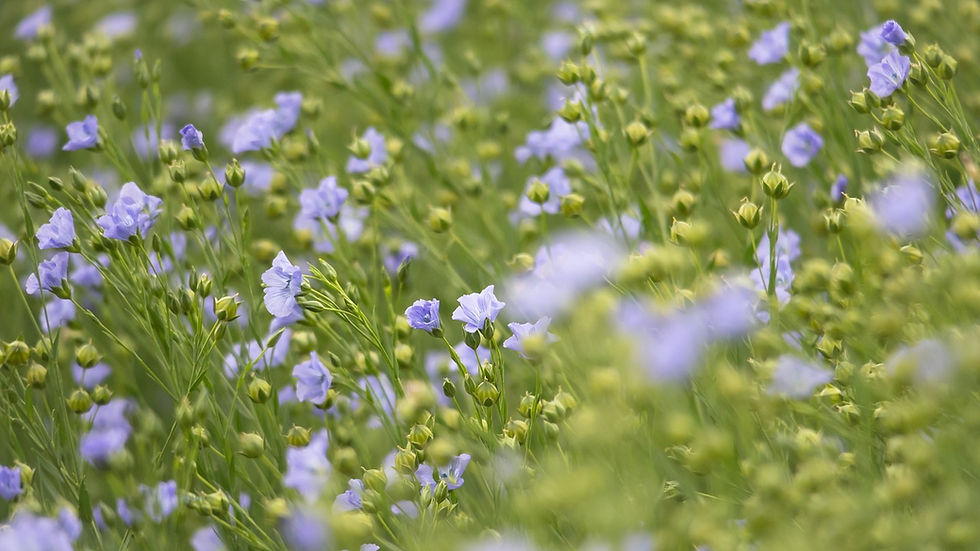Is Linen Really Sustainable? A Deep Dive into Fabric Truths
- Tyra Tessitura
- 14 hours ago
- 3 min read
What Makes Linen Sustainable? Nature’s Most Elegant Eco-Friendly Fabric
In a world shifting towards conscious consumption, natural fabrics are making a powerful comeback — and linen is leading the way. But what makes linen fabric sustainable? Is it just the latest greenwashing buzzword, or does it truly walk the eco-talk?
At Tyra Linen, we believe in fabric that’s as kind to the Earth as it is to your skin. Here's why sustainable linen is the future of fashion — and why your wardrobe deserves it.

🌱 1. Linen Comes From Flax — A Low-Impact, High-Yield Crop
The journey of linen begins with flax, a resilient plant that grows quickly with minimal water and thrives in poor-quality soil. Unlike thirsty crops like cotton, flax requires little to no irrigation or pesticides, making it a naturally eco-friendly choice.
Even better? Every part of the flax plant is used — from the fibers for fabric to the seeds for oil — ensuring a zero-waste production process. That’s sustainability rooted in nature.
🌾 2. Linen Fabric Is Fully Biodegradable and Compostable
When you invest in sustainable linen clothing, you're choosing a material that doesn’t just reduce impact during use — it also returns to the Earth after its life cycle ends. Pure linen is 100% bio-degradable, meaning it won’t clog landfills or shed microplastics like synthetic fabrics.
Whether you upcycle, reuse, or compost it, linen leaves no trace — just a lighter footprint.

💧 3. Less Water, Less Waste, More Responsibility
Wondering why linen is eco-friendly? One word: water. It takes over 7,000 liters of water to produce a single cotton T-shirt. Linen? Just a fraction of that.
The flax plant is rain-fed and naturally pest-resistant. That means no harmful chemicals, no GMO seeds, and minimal freshwater usage. At Tyra Linen, we go a step further by working with partners who use low-impact dyes and natural finishing processes.

🧵 4. Strong, Durable, and Long-Lasting
Fast fashion thrives on fragility. Linen does the opposite. With its incredible tensile strength, linen outlasts most natural fibers — including cotton. In fact, linen garments can last decades when properly cared for.
By choosing quality pieces that stand the test of time, you're actively reducing textile waste and supporting a slow fashion movement that values longevity over landfill.
🌸 5. Natural Texture, Timeless Appeal
Let’s not forget the aesthetic. Linen’s relaxed, breathable, and slightly crinkled texture is more than just style — it’s function with flair. Ideal for warm climates and sensitive skin, linen is naturally hypoallergenic and anti-bacterial.
And the best part? It gets softer with every wear and wash — aging gracefully, just like you.
👚 At Tyra Linen, Sustainability Isn’t Just a Word — It’s a Standard
From fabric sourcing to stitching, Tyra Linen is built on a commitment to authenticity. We manufacture our linen fabric in India using eco-conscious methods and partner with an NGO that employs and trains women artisans from nearby villages.
Every garment you buy contributes directly to a school for children in special needs, proving that sustainability can uplift both planet and people.
🌿 Final Thoughts: Why Sustainable Linen Deserves a Place in Your Wardrobe
So, what makes linen fabric sustainable? It’s the perfect harmony of nature, function, and purpose. It’s breathable, biodegradable, beautiful — and built to last.
Ready to wear your values? Explore our latest collection of women’s and men’s linen clothing made with love, care, and community at www.tyralinen.com.
_edited.jpg)






Comments